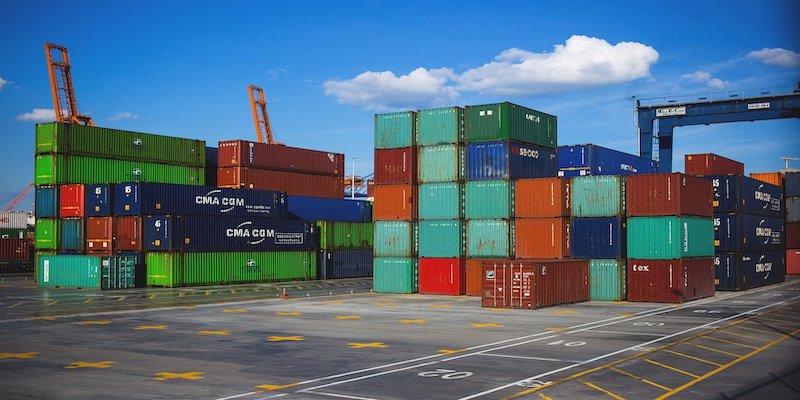One way to improve your corporate bottom line is to get your supply chain costs under control. While this sounds straightforward in theory, the reality is that today’s supply chains are highly complicated and intricately interconnected.
To achieve a noteworthy saving, it is important to know where you should look. Thankfully, there are several areas across all areas of business that offer opportunities for supply chain cost reduction.
Types of Costs in Supply Chain Management
Before we look into the six main supply chain cost reduction techniques, we will first of all delve into the different costs that a firm will come up against, and how they can easily get out of control.
Typically there are five main types of costs in supply chain management, which are:
Investment Costs
In today’s more globalised economy, the majority of supply chains are a multi-site network of manufacturers, suppliers, distributors and retailers that can spread across the world. It is therefore essential to make informed and strategic decisions, such as where to invest in new facilities (such as factories and warehouses) and resources (such as employees and equipment).
Many companies will unfortunately spend too much of their money in the wrong areas at the wrong times, or fail to invest in the right locations at the right times. This can have an extremely negative effect on their financial fortunes.
Transportation Costs
The second type of cost in supply chain management comes in the form of transportation. Typically, the main cause of higher transport costs is inefficient network planning, routing, and deployment of resources.
Procurement Costs
Choosing the right supplier is integral to keeping your procurement costs down. The right supplier will almost always be able to deliver the right products and materials at the right times – and at the lowest price.
Choosing the wrong supplier, on the other hand, could see you dealing with a partner that is both unreliable and too expensive – threatening both your bottom line and potentially your reputation with your customers and clients.
Production Costs
This type of supply chain cost primarily applies to the manufacturing sector. Inflated production costs can be caused by several different factors, such as the inefficient utilisation of certain machines and poor workforce management.
Inventory Costs
The final type of supply chain cost is down to inventory. Businesses across the supply chain spectrum will rely on their inventory to act as a protective buffer against fluctuating supply and demand. While an increased inventory may act as a potential safety net, it is also a large source of costs. Stockpiling can especially cause your warehousing and transportation costs to increase, tying up important capital that could otherwise be spent elsewhere.

The Benefits of Cost Effective Supply Chain Management
There are several benefits of cost effective supply chain management, the most obvious one being the freeing up of cash to be allocated where it is needed most. Looking at how to reduce these costs also forces you to take a holistic view of your chain – giving you the chance not to just identify ways of saving money, but also making the entire process more efficient. This could then lead to even more cost reductions further down the line.
One such example is looking at the diversity of your supply chain. By thoroughly investigating your current supplier network, and identifying other potential providers, you can unlock several benefits to your company – such as new business opportunities, better adaptability and an enhanced corporate image.
Supply Chain Cost Reduction Techniques
Now that we have discussed the types of costs companies will face in their supply chains, we can move on to identifying several important supply chain cost reduction techniques that can really help you improve your firm’s financial health. It is important to note that this is not an exhaustive list, and there are many other ways to make savings.
Streamline Ordering Processes
The first of our supply chain cost reduction techniques is to make your ordering processes as efficient as possible. Using a single software package to make your requisitions, for example, will eliminate the risk of employees using different applications and causing confusion. This could lead to too many of a particular product being ordered, which in itself would be a waste of money. It is also a good idea to implement an approvals process, where only designated individuals can sign off on purchases, further reducing the risk of things being ordered unnecessarily.
Manage Inventory
For more manufactured products, inventory levels can actually make up to 75% of your total costs. This relates to everything from components and raw materials to subassemblies. It is possible to achieve a large reduction in inventory costs by swapping to something like a just-in-time (JIT) system of inventory management.
A JIT system will enable you to order and receive inventory as and when it is needed, rather than having to store lots of unused stock. This will not only eliminate any overheads caused by excess inventory, but also reduces your carrying fees as well.
Monitor Customer Demands
The third of our supply chain cost reduction techniques is to take note of your customers and their demands. By regularly monitoring ordering patterns, you can spot trends that will enable you to identify areas of your current supply chain that need to be tweaked.
For example, you may find that patterns will change from month to month, or season to season, and then use this information to make more data-driven ordering decisions.
Make Use of Space
As you will no doubt be aware, storing inventory and supplies in a warehouse comes at a cost. You should therefore carry out an assessment of your current practices to see if you are making the most of the space you have. If you are then able to reorganise your inventory, you may find there is a better, more cost-effective way of utilising your space. In more extreme circumstances, you could actually ascertain that you are simply paying for a space that is too large for your needs and choose to downsize – thereby saving you a lot of cash.
Track Performance
This is probably one of the most overlooked of the supply chain cost reduction techniques. This is because many companies will spend a lot of time, effort, and money into amending their supply chains – and then never checking back to see if these changes actually yielded positive results. What is worse, some companies may not even be tracking their current supply chain models, meaning they have no real idea about what is performing and what is not.
You should instead set up key performance indicators (KPIs) that consist of realistic targets. The next step is to come up with trackable steps to help you reach these goals. Tracking your performance can also help with accurately forecasting things such as stock renewals, logistics and base supply.
Consider Automation
It may seem a bit left-field, but using automation can actually help you reduce your supply chain costs. Having a professional visit your premises and assess your current operations can provide you with helpful and insightful advice about how to automise your supply chain and make things much more efficient.
Part of a Wider Business Health Check
While you are reviewing your supply chain, it is also a good idea to get an overview of other aspects of your business to ensure it is running as efficiently as possible. Perhaps you are thinking about growing your company but are unsure of the types of business funding sources that are available to you. You may even want to carry out an independent review of your firm to highlight any areas for improvement – such as cash flow management.
Whatever your business requirements, you can rely on Inquesta to help. We will carry out a thorough assessment of your business and recommend what we believe are the most appropriate solutions for you.
For more information, contact our team today or book a free consultation.




